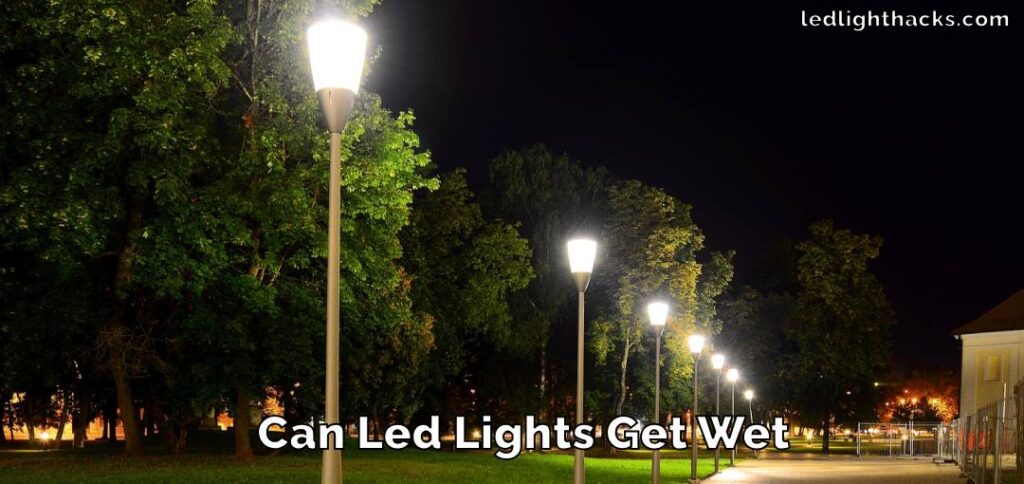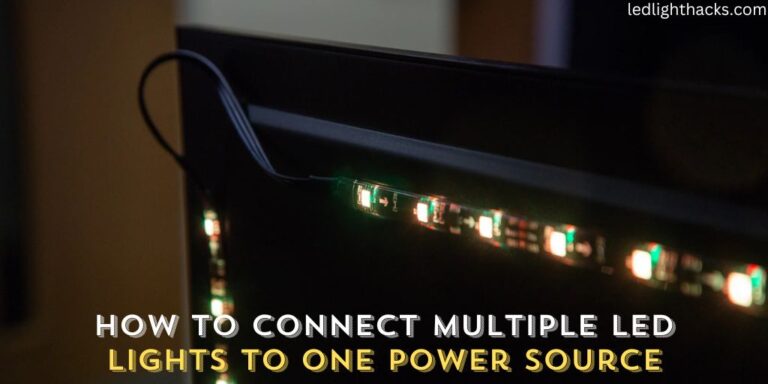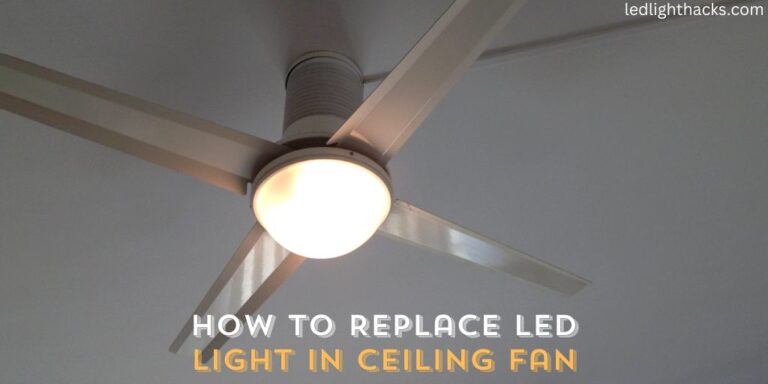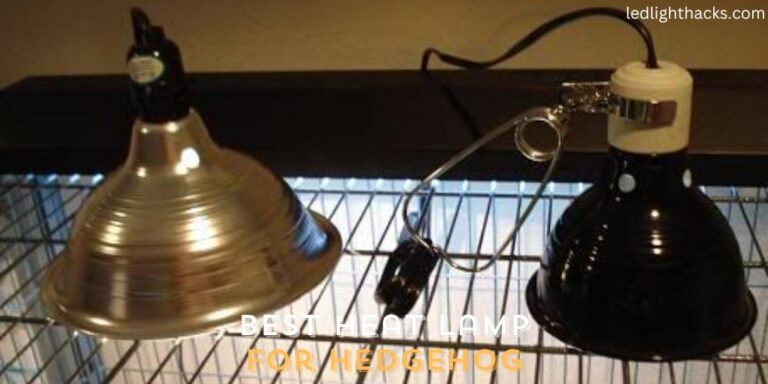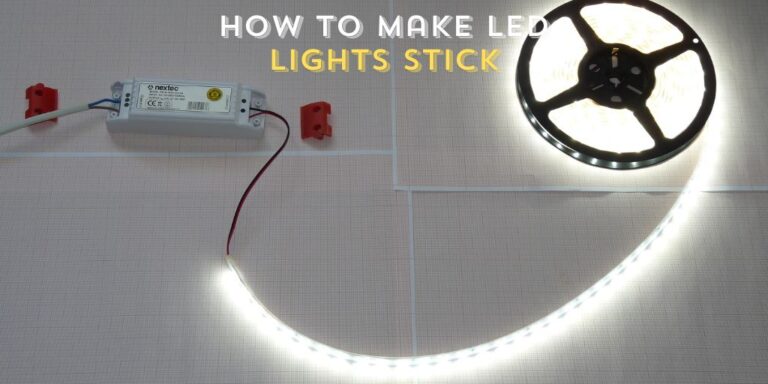How to Change Color Temperature of LED Lights
Color temperature is a key concept in lighting that really affects the feel of a space. It’s about whether the light from an LED is warm and yellowish or cool and bluish. Being able to change the color temperature of LED lights gives you the power to customize how a room feels. This isn’t just about how bright the light is; it’s about the light’s quality and tone.
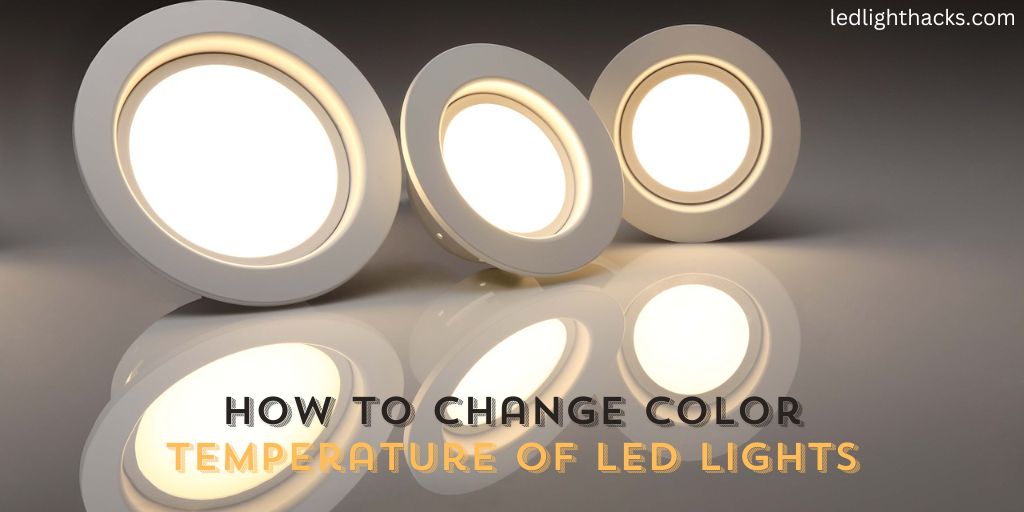
Learning How to change color temperature of LED lights is a practical skill and a creative one. It lets you set the mood of your environment to match what you’re doing, whether that’s reading, cooking, or just hanging out with friends.
With LED lights, you’re in control.
You can tweak the lighting to perfectly suit your preferences, enhancing both the comfort and functionality of your space. This guide will show you how to master this ability, giving you the freedom to change the atmosphere of your rooms with just a few adjustments.
Unlocking LED Light Temperatures
LED color temperatures are akin to having a painter’s palette for lighting. The term ‘color temperature’ refers to where a particular light falls on the warm-to-cool spectrum, which is a way to describe the light’s appearance.
This spectrum is akin to the natural progression of light from dawn to dusk. At one end, we have the warm, yellowish-white light akin to early morning or late evening sunlight, typically around 2700 Kelvin (K), creating a cozy, welcoming effect.
As we move up the scale towards 5000K, the light becomes cooler and bluer, akin to the noonday sun, which can help you stay alert and focused.
LED lights are versatile in that they can provide a wide range of color temperatures suited for different settings and preferences. For instance, you might choose a warmer light for your living room to relax and a cooler light for your study to keep you attentive.
This adaptability makes LED lighting a favorite for both home and work environments, offering the ability to customize your space to suit various activities and moods.
By understanding and utilizing the full breadth of LED color temperatures, you can enhance your environment in both subtle and substantial ways.
Comparing Warmth and Clarity
When we compare LED lights with different color temperatures, such as soft white and daylight, it’s much like comparing the light of a campfire to that of a clear sky at noon. Soft white LEDs, which have a color temperature between 2700K and 3000K, emit a warm glow.
This light is similar to the soft hues present during sunrise or sunset, providing a restful and soothing atmosphere that’s perfect for areas of relaxation like living rooms or bedrooms. It’s the kind of light that can make a room feel like a cozy sanctuary after a long day.
On the other hand, daylight LEDs, with a color temperature of around 5000K, cast a much brighter and whiter light. This is comparable to the midday sun that bathes us in bright light, which can make us feel more awake and alert.
Such light is excellent for places where you need to concentrate, like offices or kitchens, as it can help reduce eye strain and improve productivity. By choosing the right color temperature for your LED lights, you can greatly affect the look and feel of a space, making it more suited to specific tasks or the time of day.
How to Change Color Temperature of LED Lights
Changing the color temperature of LED lights is a great way to make your space feel just right. Whether you’re tech-savvy or prefer simpler methods, there are plenty of ways to adjust the warmth or coolness of your lights. Let’s go through some options:
Smart Bulbs
Smart bulbs are awesome because you can control them with an app on your phone or tablet. Just swipe to make the light cooler for reading or warmer for relaxing.
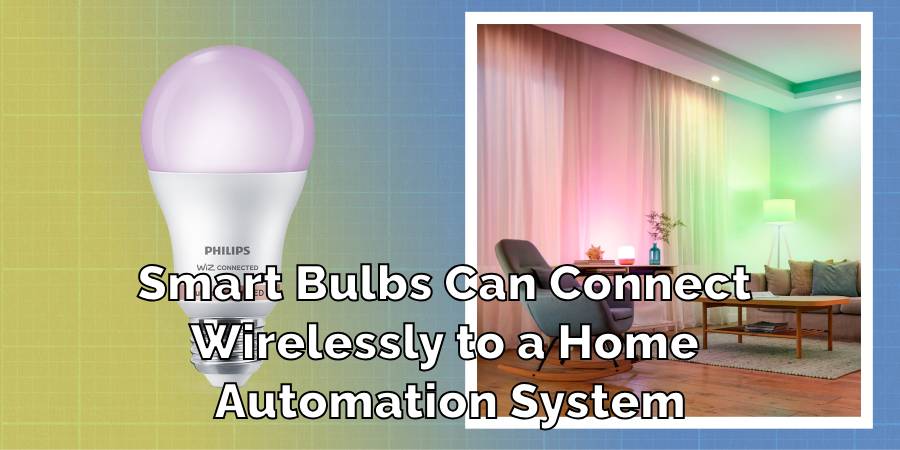
Dimmer Switches
If you have dimmer switches, you can lower your lights’ brightness. When you dim LEDs, they often appear warmer, like the cozy light you get at sunset.

Color-Tunable Bulbs
Some LED bulbs let you pick from different color temperatures. With a quick adjustment, you can switch from a warm, inviting light to a bright, energizing one.

LED Controllers
For LED strips or panels, controllers are super handy. They come with sliders or dials so you can fine-tune both the light’s brightness and its color temperature.
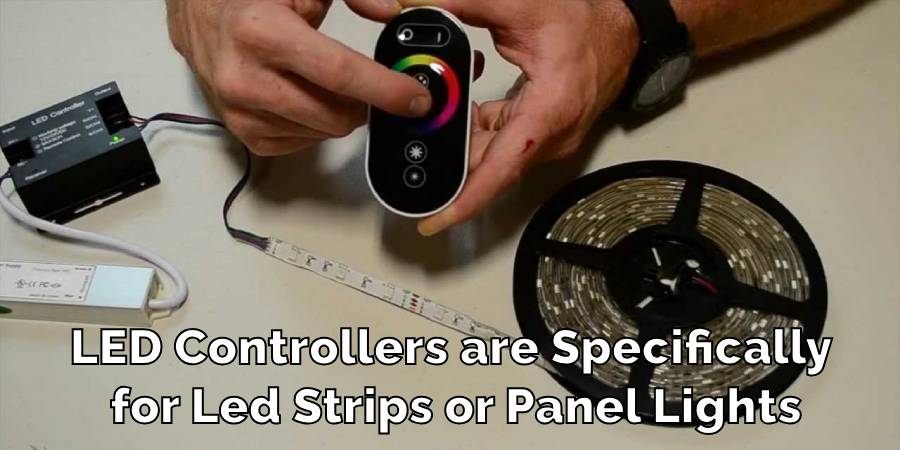
Remote Controls
Remote controls are perfect for when your LED lights are hard to reach. Just click to adjust the color temperature from anywhere in the room.
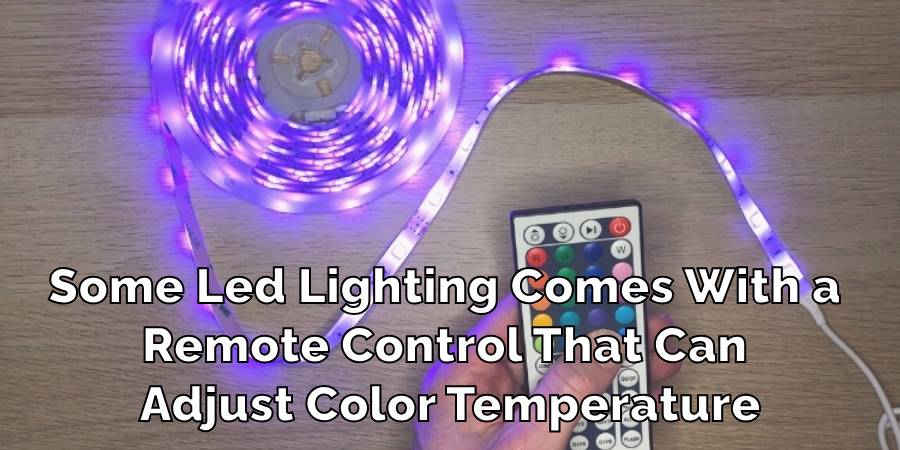
Manual Switches
Some LED lights have built-in switches that let you flip between warm and cool lighting. It’s a simple, no-fuss way to change the feel of a room.
Smart Home Assistants
For a DIY approach, you can put films or gels over your LEDs to change their color. It’s like adding a filter to your lights.
Color Temperature Films or Gels
For a hands-on approach, you can apply thin films or gels over your LEDs. These materials can alter the color temperature, adding a custom color tint to your lights.

Mixing Light Sources
You can mix and match LEDs of different color temperatures in one space. It’s a bit like painting with light, creating a custom vibe.
Replaceable LED Modules
Some LEDs let you swap out modules to change their color temperature. It’s as easy as changing a bulb but changes the light’s color instead.
Automatic Color Change LEDs
There are LEDs that adjust their color temperature automatically, based on the time of day or the amount of natural light. It’s smart lighting that adapts to your needs.
Mobile Apps
Many LED bulbs come with their own apps, letting you dial in the exact color temperature you want. You can even set schedules or adjust settings to get it just right.
With all these options, you can really tailor the lighting in your space to match your mood or activity, whether you’re hosting a dinner, working on a project, or just chilling out. LED technology has made it easier than ever to control the feel of your environment with light.
Choosing the Right Color Temperature for Different Spaces
Selecting the ideal color temperature for various areas in your home or workplace can significantly affect the look and feel of each space. Here’s a more detailed guide to help you choose:
Homes
For general living spaces, warm lights, which are around 2700K to 3000K, are perfect. They mimic the golden glow of a candle and are soft on the eyes, making spaces feel peaceful and relaxing.
Back Yard
A color temperature between 3000K and 4000K strikes a nice balance for outdoor settings. It’s not too yellow and not too blue, giving a crisp light that’s welcoming and refreshing for evening barbecues or reading outside.
Living Room
In areas where people gather, like living rooms, warm to neutral lights (2700K-4000K) can create a friendly and inviting space. This range is versatile and can accommodate both quiet evenings and lively social gatherings.
Dining Room
A warm light around 2700K to 3000K can make meal times more enjoyable. It’s the kind of light that can make food look appetizing and give the dining room a cozy, restaurant-like ambiance.
Bedroom
For bedrooms, especially warm lights (2000K-2700K) are ideal. These lights are very relaxing, helping your mind wind down at the end of the day, similar to the effect of a setting sun.
Bathroom
A neutral to cool light, in the 4000K to 5000K range, works best in bathrooms. It’s bright enough to see clearly for shaving or applying makeup, like the mid-morning light that’s clear and full of contrast.
Kitchen
Cooler lights, around 4000K to 5000K, are similar to daylight and are great for kitchens. They make everything easy to see, which helps with chopping, cooking, and cleaning.
Office
In an office setting, cooler white lights between 5000K and 6500K can help you stay focused. This light is close to natural daylight, which can make you feel more alert and attentive, reducing the strain on your eyes during long hours of work.
By choosing the right color temperature for each area, you not only improve how the space looks but also how it functions. Light influences our mood, our sleep patterns, and our ability to concentrate, so picking the right color temperature is key to creating an environment that’s both beautiful and practical.
Fostering Ambiance Through Temperature
Creating the right atmosphere with LED lights involves more than just picking a bulb it’s about finding the perfect color temperature to match what you do in each space.
Imagine your light as a background that sets the stage for every activity a warm, golden light for cozy evenings in the living room, or a bright, white light for focusing on a project in your office.
By choosing and positioning LED lights thoughtfully, you can turn a plain room into a welcoming retreat for family and friends or a place where ideas come to life.
The key is to use lights that complement the time of day and the tasks at hand. For example, a softer, warmer light can make a dinner party feel intimate, while a cooler, brighter light can help you stay awake and attentive when you’re working or studying.
It’s like adjusting the volume of music to suit your mood similarly, you adjust the light to suit your activity. The right lighting can make a room more versatile, changing from a place of relaxation to a place of productivity with just a switch of a bulb or a tap on a smartphone.
So, when you pick your LED lights, think about the kind of “visual music” you want to play in each room of your home or office.
Mitigating LED Intensity
When LED lights are too bright or harsh, they can be uncomfortable for the eyes. To make the light softer and reduce harsh shadows or glare, you can use a variety of simple methods:
Diffusers or Frosted Covers
These can be placed over LED fixtures. They work by spreading the light out more evenly, much like a lampshade, so it’s not as concentrated in one area. This makes the light appear softer and more even, which can be easier on the eyes.
Strategic Positioning
Carefully choose where to place your LED lights. Instead of pointing them directly where you sit or work, angle lights toward the walls or ceiling. This way, the light bounces off the surfaces, creating a soft glow that lights up the room without being too direct.
Layered Lighting
Use a mix of different types of light sources. For instance, along with your main LED lights, add some table lamps or wall sconces. This creates layers of light that can add depth and character to a room, while also allowing you to reduce the brightness of your overhead LEDs.
Choosing Lower Lumen LEDs
The brightness of LED lights is measured in lumens. By selecting LEDs with fewer lumens, you can achieve a more subdued lighting effect. It’s like turning down the brightness on your phone screen less light means less strain on your eyes.
These methods can help you achieve a more pleasant light quality, enhancing comfort in your space. The goal is to have lighting that feels natural and easy on the eyes, making your environment a more enjoyable place to be.
Frequently Asked Questions
How Do LED Lights Change Temperature?
LED lights can change their color temperature when you adjust the electrical current flowing through them, much like changing the volume on a radio alters the sound level.
Some LEDs mix different colored lights, like red, green, and blue diodes, to create a range of color temperatures from warm to cool.
How Can You Change the Color of an LED Light?
You can change an LED’s color by placing a colored filter over it, which acts like sunglasses tinting what you see. Another way is to replace the light source with an LED of a different color or use advanced lighting systems that let you pick colors through a smartphone app or remote control.
What Does Temperature Adjustment Mean for LED Lights?
Adjusting the color temperature means you’re changing the shade of white light that the LED emits, from a cozy, warm light similar to a candle flame, to a clear, cool light like a bright sky.
This is done using bulbs that can be tuned to your preferred shade or using devices that control the light’s settings.
How Do You Make an LED Light Warm White?
If you want your LED to have a warm white color, like the gentle glow of a morning sunrise, you can buy bulbs specifically labeled as “warm white”. Alternatively, if you have a tunable LED light, you can adjust its settings to lower the color temperature to the warm white range.
What Is Color Shifting in Lighting?
Color shifting is when you change the color of the light for different looks or effects. This can be done by installing LED strips that can glow in multiple colors or bulbs that can be controlled with a remote, allowing you to switch colors according to your mood or the occasion.
Conclusion
Adjusting your LED lights’ color temperature is like using a dimmer for your room’s mood, allowing you to craft the perfect atmosphere. With a basic grasp of color temperature—from warm, cozy tones to cool, alert ones—you can choose the best light for any activity.
Nowadays, it’s easy to change the warmth of your lights with simple tools like smart bulbs and dimmer switches. This isn’t just about lighting a room it’s about shaping your space to fit every moment of your life, from a calm night into a busy workday or a fun party.
With the right light, you can make any place feel just right. We have explored how to change color temperature of LED lights.
How to Change a Light Switch without Turning Off the Power
Mastering the skill of changing a light switch without turning off the power holds great…
How To Stick LED Strip Lights On Wall Without Damaging Paint
LED light strips have surged in popularity, adorning homes and spaces with their vibrant colors…
Can Led Lights Get Wet
LED lights are everywhere, from homes to city streets, known for their efficiency and brightness….
Creative Ways to Use LED Strip Lights in Your Home
LED strip lights, those brilliant strips of technology, serve as a beacon of innovation in…
Can Solar Lights Catch Fire
Solar garden lights are your go-to pal for lighting up your backyard oasis while keeping…
What gauge wire for LED lights
When diving into LED lighting, one aspect that might not catch your eye at first…



